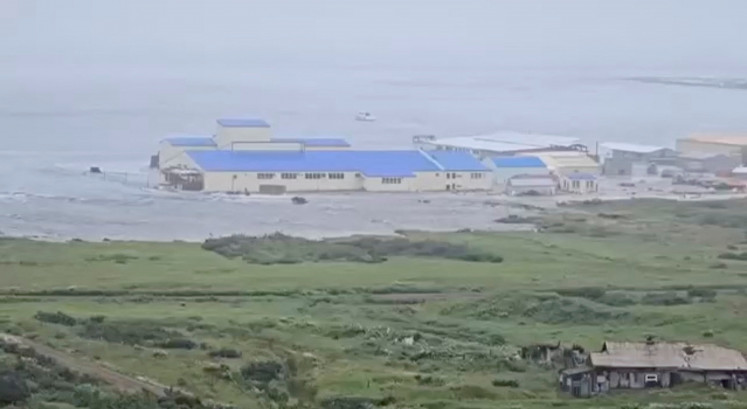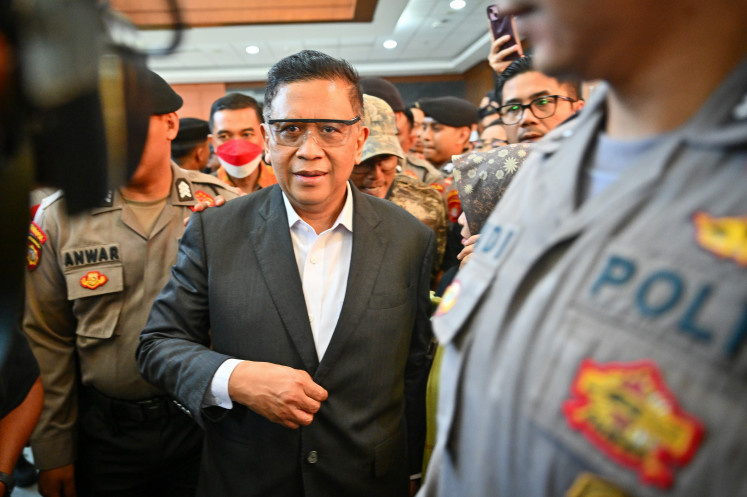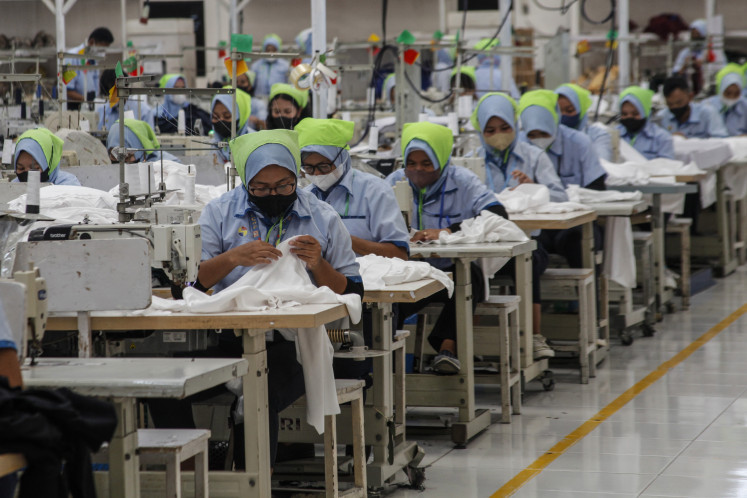Popular Reads
Top Results
Can't find what you're looking for?
View all search resultsPopular Reads
Top Results
Can't find what you're looking for?
View all search resultsGovt turns to private firms as PLN struggles
The government has invited private companies to invest in the power plant and power distribution business as state-owned electricity firm PT Perusahaan Listrik Negara (PLN) appears unable to cope with high demand
Change text size
Gift Premium Articles
to Anyone
T
he government has invited private companies to invest in the power plant and power distribution business as state-owned electricity firm PT Perusahaan Listrik Negara (PLN) appears unable to cope with high demand.
Energy and Mineral Resources Ministry director general for electricity Jarman said his office was considering a new plan that would ensure electricity supply, including via developing integrated industrial zones.
Under the new plan, a company can develop a power plant in a specific area and then use the transmission network operated by PLN to supply the industrial area.
'The model is called power wheeling. Under the model, the private company must pay a leasing cost. It must also pay a 'cost of reliability' to PLN, which will ensure the power supply if there's problem with the power plant [belonging to the private company],' Jarman said.
He added private electricity firms could also develop their own transmission network, which could also be utilized by other companies (or open access network).
Jarman said the new model was expected to encourage investors to build their own power generation capacity after the government decided to stop its power subsidy for big consumers, thus increasing electricity rates starting on May 1.
The rate adjustment will be made every two months until the end of the year with an increase of 8.6 percent for industries with 200 kilovolt amperes (kVA) and 13.3 percent for industries with up to 30,000 kVA in consumption. The gradual increases will be equal to 38.9 percent and 64.7 percent in total for respective industries. The new model will aim to meet demand from industries.
'All this time, power generators have been built by PLN using the state budget or other government funding. Later, this will be conducted by private companies. The ability of PLN to develop power plant infrastructure is very limited while demand is huge,' Jarman said.
The country's electrification ratio reached 80 percent at the end of last year. Meanwhile, the total electricity generation capacity touched 47,128 megawatts (MW) as of the end of 2013.
Under PLN's electricity procurement plan, Java and Bali will see an average increase of 7.6 percent per year in electricity demand during 2013 to 2022. The expected demand in the areas is estimated to reach 275 terawatt hours (TWh) by 2022 compared to 144 TWh in 2013.
In the same period, the eastern part of Indonesia is expected to report a demand of electricity of 46 TWh, up from last year's level of 18.5 TWh, which is equal to an annual average growth of 11.2 percent.
Meanwhile, Sumatra will have a 65.7 TWh demand by 2022 from a level of 26.5 TWh in 2013, equal to a 10.6 percent increase per year.
To avoid any crisis, there should be an additional power plant capacity of 59.5 gigawatts (GW) in the period from 2013 to 2022. This means the country should see around a 6 GW additional capacity per year nationwide.
Under PLN's plan, the company will need to prepare US$125 billion in the next 10 years to meet the demand and suitable transmission networks, according to the company's director for planning, Murtaqi Syamsuddin.










